‘Be ye kind to one another’: rural togetherness in times of crisis
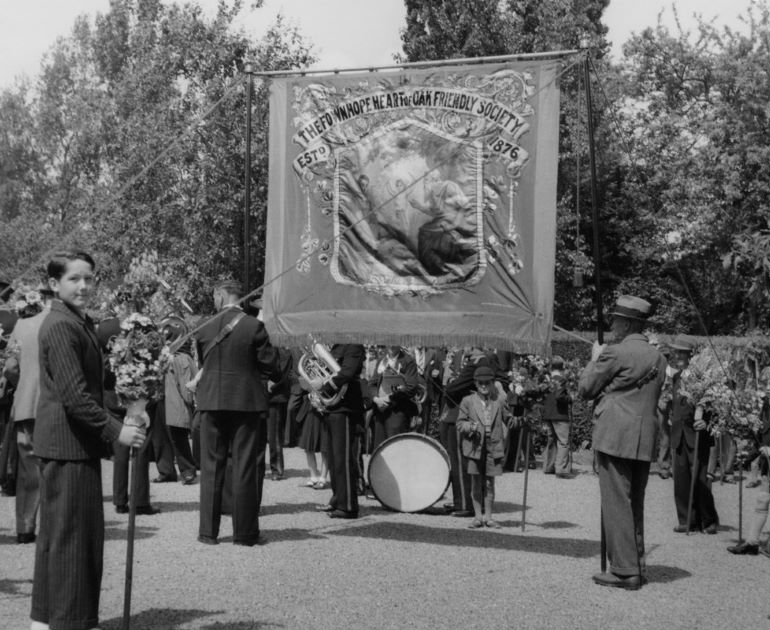
People in the countryside have always had a strong sense of community, and this has always been the most apparent during times of hardship.
Whether these crises throughout history were caused by pandemics, natural disasters, or socio-economic factors, many examples can be traced throughout English history of rural people banding together to survive.
In this exhibition, as part of our 2022 programme, CARE, we showcase how countryside communities responded together in moments of crisis.

The origin of Friendly Societies
Before the introduction of National Insurance in 1911, people who were sick, elderly or recently bereaved were looked after by organisations known as Friendly Societies.
The Government encouraged the formation of Friendly Societies in the 1793 Friendly Society Act. These groups were led by communities, and they were particularly vital at that historical moment, as the Government cracked down on trade unions in fear of social unrest following the French Revolution.
Throughout the 19th century, Friendly Societies were often the first—and, indeed, last—line of defence keeping the rural poor from workhouses. They were especially popular in small villages. In Caistor, Lincolnshire, 1885, for example, the Caistor Society of United Druids had 199 members, which was over 10% of the village’s population.
This polehead, which belonged to a Friendly Society, is believed to be associated with druids due to its sickle shape.
For more about rural magic, visit our blog about the secret society of the Horseman’s Word.

What did Friendly Societies do?
Friendly Societies were the epitome of rural togetherness, as they offered support to those who would otherwise have been ostracised. For example, when a man by the name of Samuel Leighton died of suspected cholera in 1832 in South Cave, a village in the East Riding, there was a general fear of approaching him or his family. However, the local Friendly Society organised and attended his funeral, and visited his wife to give her the insurance fund of £12.
The Societies provided for sick pay, unless the infirmity was self-inflicted. Within the Wedmore New Friendly society, for instance, members could not be compensated when they had sickness caused by ‘Drunkenness, Venereal Disease, Cudgel Playing, Wrestling or any Gambling Exercises’.
This medal of the Berkshire Friendly Society is inscribed ‘Be ye kind to one another’ and surmises the aim of many Friendly Societies.
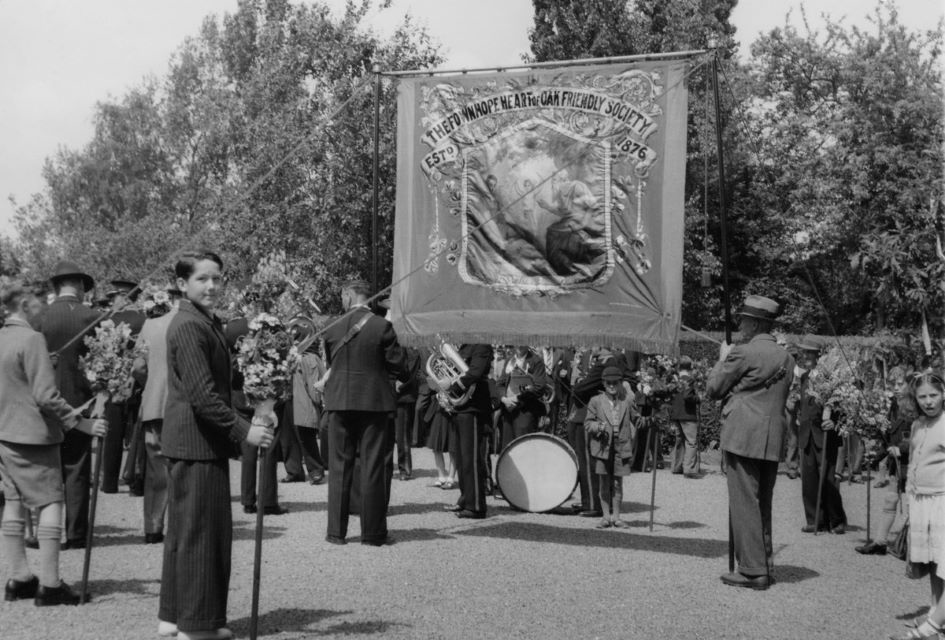
Friendly Society paegentry
The activities of Friendly Societies were not limited to financial support. Much of their work involved fostering community spirit by organising marches and fetes. While some MPs and religious figures disapproved of these gatherings, they never diminished in their importance. One example from our records is The Rothwell Internment Society’s annual tea drinking party; an essential date in the town calendar that brought together 340 attendees in 1857.
Some Friendly Societies placed a strong emphasis on regalia. For example, the Oddfellows took pole heads on their marches, with each signifying the holder’s position within the organisation. They are one of the few friendly societies still in existence today.
Pictured is the Festival of the Hearts of Oak Society in Fownhope, Herefordshire.

The Great Agricultural Depression: the end of the Corn Laws
In 1846, the repeal of legislation known as the Corn Laws (which regulated the price, and trade, of grain) allowed for cheap grain to be imported from abroad, particularly from the USA and Russia.
Whilst the lower cost of grain had benefits for Britain’s growing urban population, British grain farmers suffered. Combined with the poor harvests and atrocious weather conditions of the 1870s, the resulting Great Agricultural Depression of 1873 to 1896 caused destitution for farm labourers. This had an enormous impact on accelerating England’s rural depopulation, as labourers struggled to make ends meet.
The response of the UK Government was woefully inadequate. The Richmond Commission was set up in 1879 to investigate the issues but only interviewed the landowning aristocracy, and the views of the workers impacted the most heavily were underrepresented.
As torrential rainfall hammered down upon the fields and pastures of the late 1870s, this umbrella—made of reinforced blue cotton—may well have been used by a shepherd at work in this extremely precarious moment.

Landownership in the Great Agricultural Depression
Wary of the falling price of grain, many landowners sought to protect their financial interests by switching to sheep farming. However, this was often not done by negotiation with tenant farmers, but by force.
Before 1850, the Hampshire chalklands—for instance—had always focused on arable farming. Yet, as grain prices fluctuated, farmers found that their contracts suddenly insisted they rear a minimum number of sheep, and demanded that they apply for permission to plough any land.
Some landlords were more cooperative and responded positively to the struggles of their tenants. In a notable case in 1885, the landowner Colonel Mitford issued a 20% reduction in farm rents on his Yorkshire holdings.
This billhook was used by a Hampshire fencer. Fencing was essential for enclosing sheep on previously arable land.
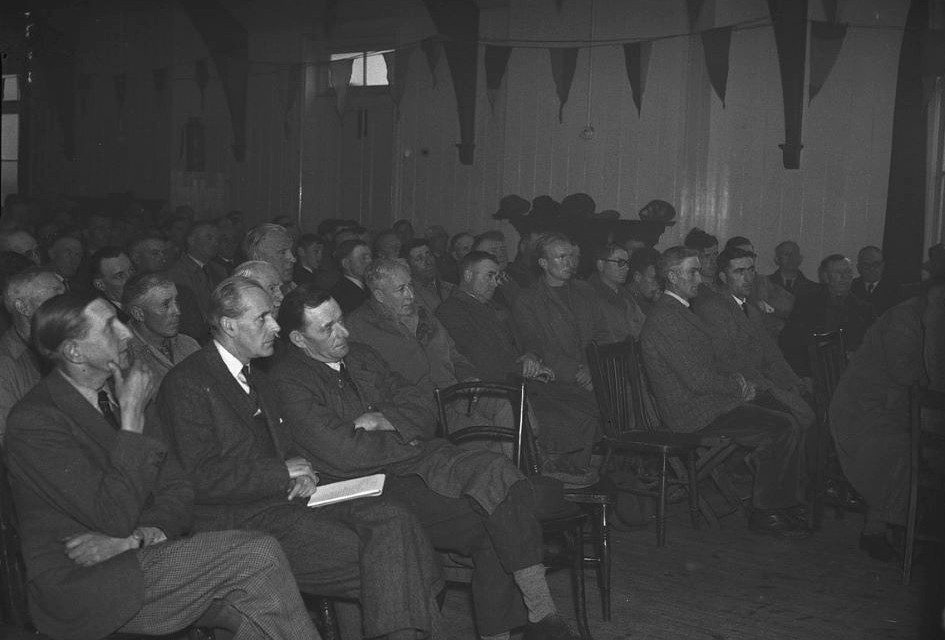
Tenant farmers organise
Outraged at landowners’ demands, tenant farmers demonstrated an unprecedented level of unity as they campaigned for lower rents.
Local unions began to form around the country. In 1892, a large gathering of Lancashire farmers agreed to form a farmers’ association. Their main aim was to establish an impartial tribunal to set rents, and—by doing so—protect tenant farmers from exploitative landlords.
Many farmers wrote to local newspapers in order to raise awareness. One particularly angry farmer wrote to the Chelmsford Chronicle: ‘The truth of the matter is this: our law-makers have ruined us by expenses and by boards and officials, and the whole tendency of modern legislation is to break down the middle class’.
This photograph shows a separate farmers’ association, meeting many years later in 1948.

The 1918 Flu
The influenza pandemic of 1918—known at the time as ‘Spanish Flu’—devastated the globe, killing over 200,000 people in the UK. Whilst scientists understood the benefits of social distancing and quarantine, the Central Board of Health failed to coordinate a national response. They only offered advice to local councils and did not enforce any restrictions. Secondary schools and churches generally remained open.
Rural areas were hit particularly hard, due to a lack of access to organised healthcare. Some villages, such as Bookham in Surrey, lost their only doctor early in the pandemic.
Doctors’ certificates like the one below, on loan from the Berkshire Medical Heritage Centre, were used to diagnose illnesses after 1911. Without their doctor, many people resorted to strange remedies. Pears Jackson, who farmed near Kenwick, recalled: ‘One farmer I knew swore he cured himself with paraffin oil’!
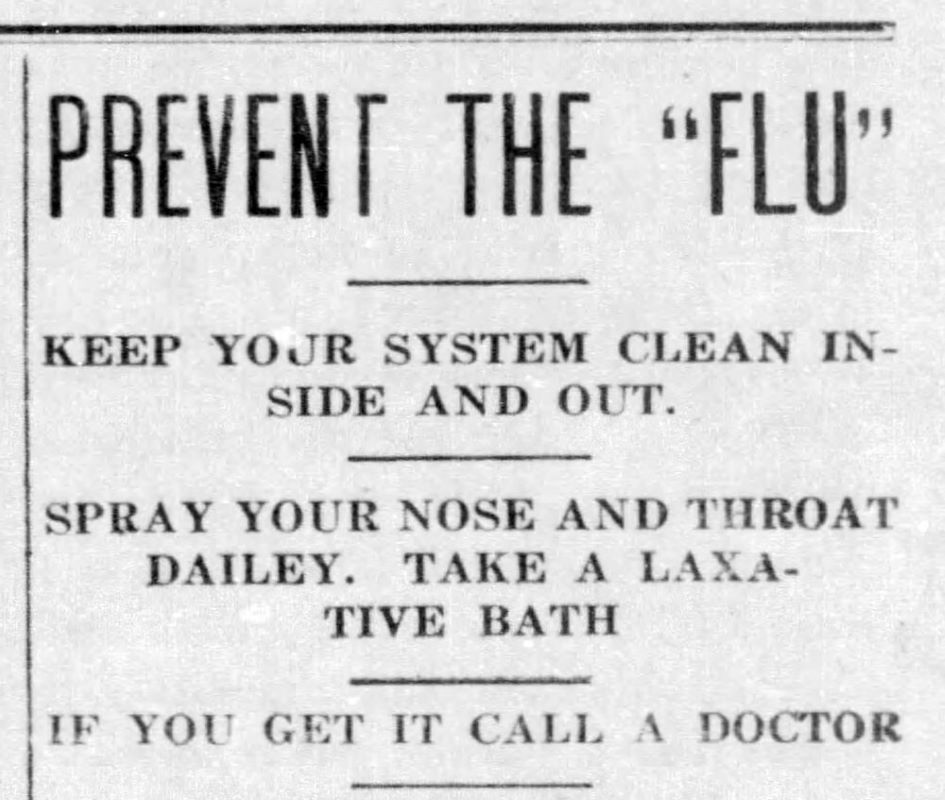
International crisis, local response
Whilst national guidance was severely lacking, some local authorities and individual venues took sensible precautions which helped alleviate the virus in their immediate area. The South Staffordshire Rural District Council, for instance, authorised the printing of one hundred informative posters in November 1918. The Council chairman said that ‘if we prevent one death through the dissemination of the information, it will be worth it’.
Others took more direct action. In Carlton, Netherfield and Colwick, picture palaces—elaborate cinemas that opened in the early 20th century—undertook regular cleaning with disinfectant and improved ventilation. Elsewhere, Chesterfield Council closed all schools, churches and chapels in December 1918.
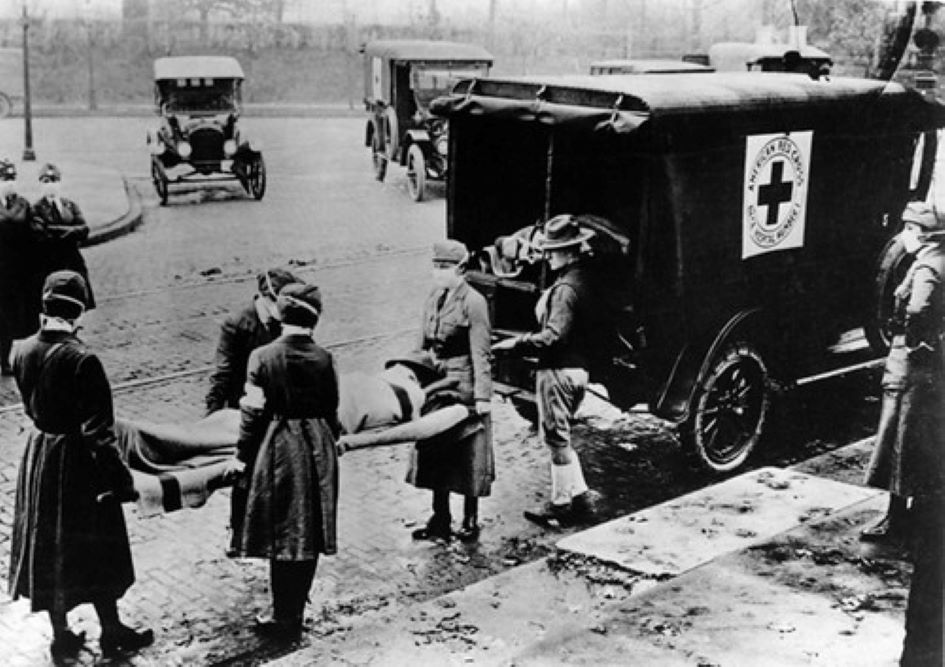
Banding together
As the flu continued to devastate the countryside, more often than not it was up to individuals to go above and beyond in order to help their stricken communities.
Countless stories of this nature were printed in local newspapers. In Beeston, Nottinghamshire, wives and children of unwell shopkeepers ran their businesses for weeks on end. The Rock House Children’s Home in Chipstead, Surrey, saw thirty-one cases of the flu, with 11 children taken to hospital. All recovered thanks to the tireless work of the staff, many of whom were ill themselves.
Of course, these individual acts of heroism were not limited to the UK. In New Ross, Ireland, the New Ross ladies’ committee secured 40 gallons of milk for the sick and poor in November 1918. The town collectively raised £255 towards the fund for milk, cocoa and Bovril. Meanwhile, the town’s gas supply survived only because the manager, Mr Kirkham, worked several nights in a row with little sleep.
This image shows nurses caring for a flu victim. Local people were frequently drafted into these roles with little training.
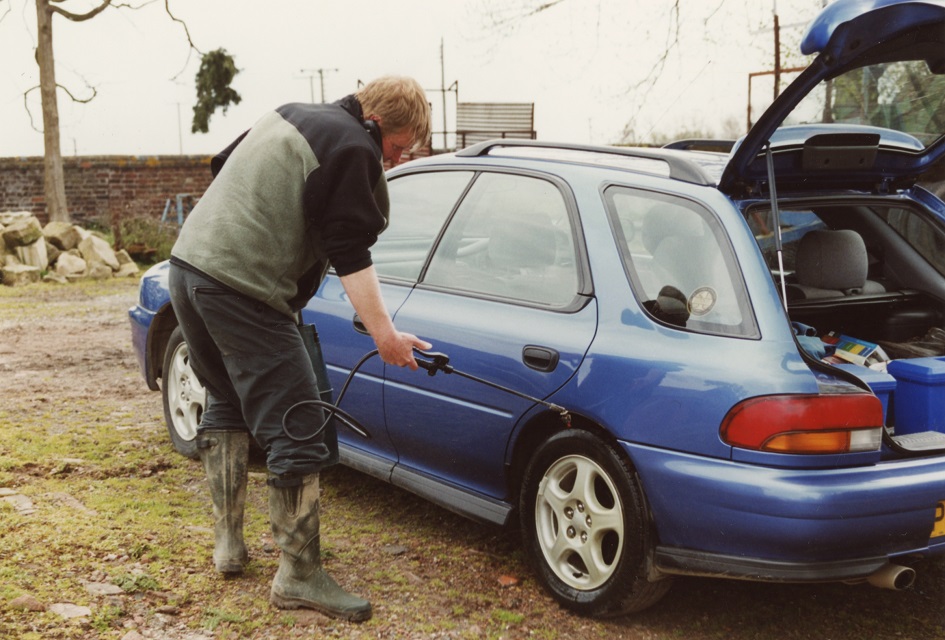
Foot and Mouth Disease, 2001
The Foot and Mouth pandemic of 2001 was a national crisis that, according to a Government enquiry, was ‘one of the greatest social upheavals since the war’.
The disease spread rapidly across the country, with particularly devastating consequences in northern England. In Cumbria, more than 70% of farms undertook a partial or complete cull of their livestock. Government advice to stay away from the countryside resulted in a dramatic drop in tourism.
Though the economic effects of the pandemic were severe, the impact on farmers’ wellbeing and mental health was devastating.
‘To see your life’s work lying dead in your yards and fields is something no one can imagine until you see it for yourself’.
‘The first week or so (after culling), when I was sitting ploughing, and doing jobs sitting on the tractor, just sitting there thinking about it all, there were many a time I had to wipe tears off my eyes, I can tell you. The more you talk about it, the less it hurts’.
This image shows a farmer spraying the wheels of his car with disinfectant to prevent transmission.

Technology and community
One major contributing factor to poor mental health during the crisis was the feeling of total isolation as many farmers were forced into seclusion for months on end.
The Ministry of Agriculture, Fisheries and Food (MAFF), who led the government response, largely assumed farmers were computer-literate and could access information online. Sadly, this was often not the case.
To combat this problem in Cumbria, the community-organised Pentalk Network was established. It was designed to provide farmers with computers (which were free for the first six months) as well as training on how to access information about Foot and Mouth Disease and join online communities of farmers. This training was delivered at community colleges in local village halls, as well as a ‘computer bus’ which visited farmers near their homes.
Pictured is a farmer with an early computer in 1989. However, many farmers did not own a computer by 2001.
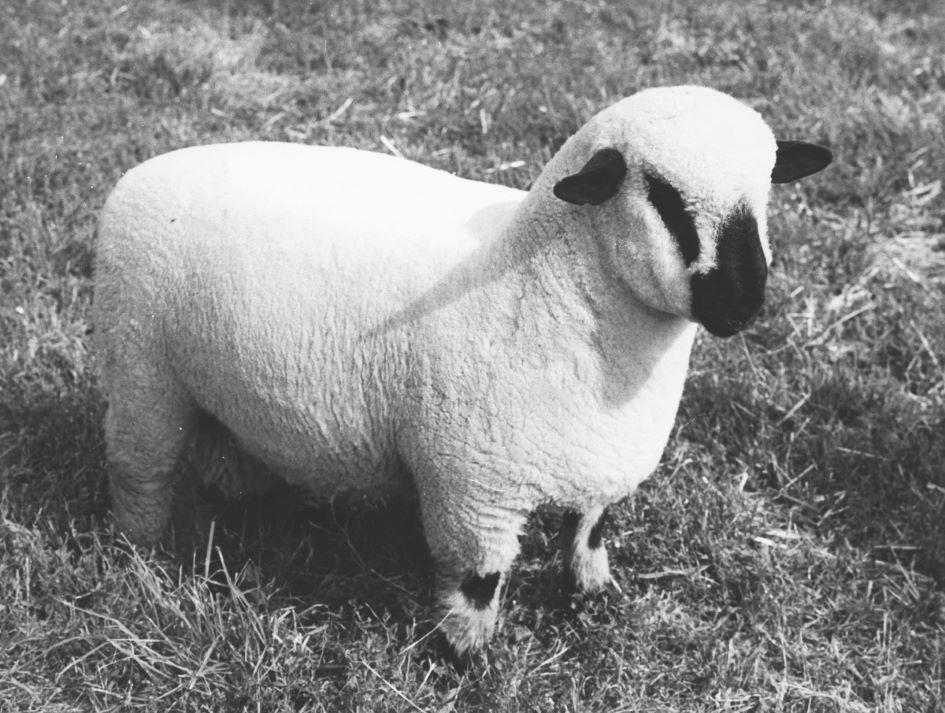
Mental health in farming
The MAFF treated Foot and Mouth as purely an animal problem from the outset, and decided culling was a preferable solution to vaccination. The mass slaughter that followed was a source of great trauma for farmers. Over 1,000,000 sheep were culled in Cumbria, and pedigree animals which had obtained their features through centuries of breeding were lost. This photo shows a pedigree Hampshire down ram from the 1950s, part of a long bloodline.
A 2002 survey suggested that farmers turned to their community for mental health support. As well as seeking help from family, many farmers turned to friends, other farmers, and veterinary surgeons. Only 1.5% of respondents sought help from a mental health specialist, prompting questions on how these services could become more accessible for farmers that needed them.
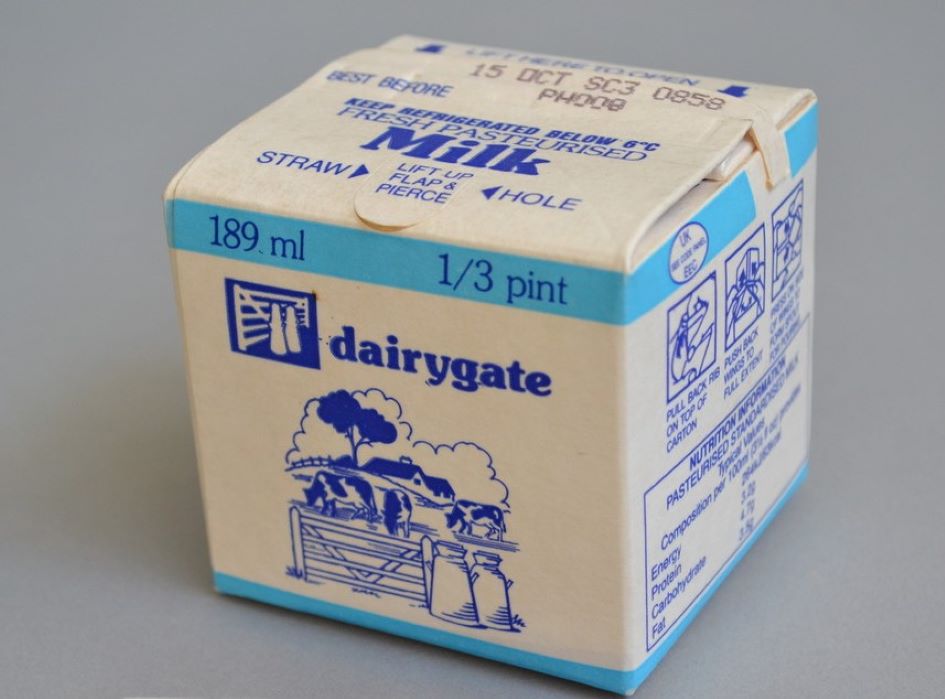
COVID: a change in demand
On the whole, agriculture was not affected by COVID as badly as many other industries, due to a steady demand for produce and farmers’ designation as essential workers.
However, lockdown had a major impact on farmers’ usual markets. Most notably, the sudden closure of coffee shops and cafés led to many dairy farmers pouring milk away. Only a month after the first lockdown in 2020, milk prices declined by 25% across the country.
Additionally, travel restrictions limited the movement of seasonal workers, causing stress for farmers who rely on this labour. The UK usually sees around 1,000 workers come from European countries such as Poland and Romania to assist in preparing turkeys for Christmas. In 2020, this was compromised by the need for a two-week quarantine, which would have affected the very short training period these workers usually have.
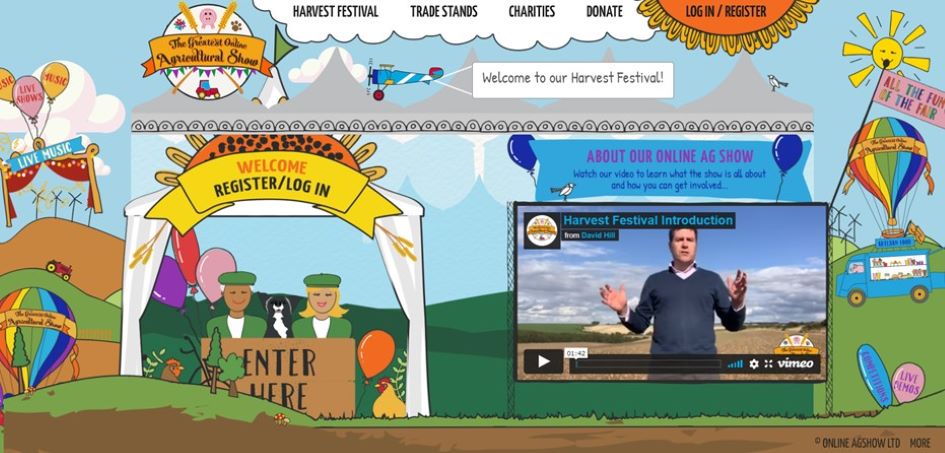
The Greatest Online Agricultural Show
One particularly devastating impact of COVID was the cancellation of agricultural shows, which are essential networking opportunities for livestock farmers. Their social and business aspects are equally important. They also form a vital link between communities and farmers. During the pandemic, we wrote a blog about the history and role of these shows.
As agricultural shows around the country were cancelled, David Hill introduced the idea of taking a traditional county show online, and was encouraged by an immediate outpouring of support. The eventual show, named The Greatest Online Agricultural Show, became a huge success, raising £18,000 for five rural mental health charities.
We spoke to David, who said: ‘The rural community absolutely came together. So many people wanted to be involved and it was never with a “What can I get out of this?” attitude. The chat room in the beer tent all day really brought a tear to my eye. It was the moment when I really realised how involved everyone had become’.

Buying local
At the start of the pandemic, booking online deliveries from supermarkets was difficult due to high demand. As a result, people turned to local farm shops as a food source, both to avoid busy supermarkets and to support their local communities. In April 2020, Google searches for ‘local food’ reached an all-time high.
Seeking to meet this new need, many farmers opened farm shops. For example, in Norfolk, the Goat Shed Farm shop opened and enjoyed great success. In an interview with Farmers’ Weekly, the owner explained how a strong sense of community fuelled this prosperity. Unlike a supermarket, he was able to listen to his customers and provide them with items that were otherwise in shortage, such as toilet roll and flour.
This image shows the University of Reading farm shop, which opened around 1970.
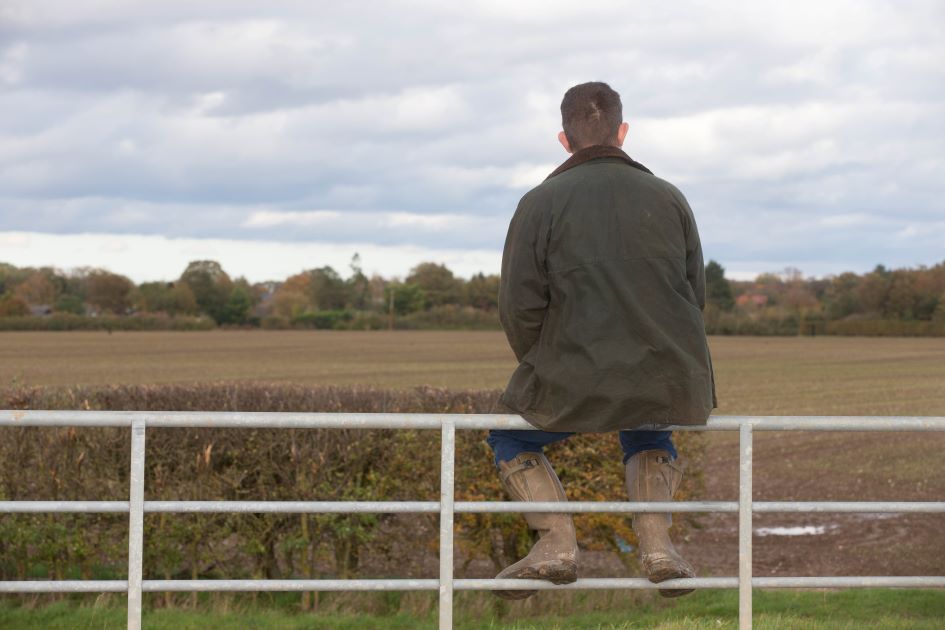
Rural isolation
As with Foot and Mouth, COVID resulted in feelings of isolation for many rural people. However, the response was different this time. Online communities provided a sense of togetherness that would otherwise be lacking. The ’25 days 25 push-ups’ challenge was popular on Twitter, and encouraged rural people to speak openly about their mental health.
Organisations such as the RABI (Royal Agricultural Benevolent Society) worked hard to ensure the farming community was cared for.
We spoke to RABI, who told us about multiple new initiatives. In October 2020, a new online mental wellbeing service was launched in partnership with Kooth and Qwell. Free online mental health counselling has been launched since. As RABI puts it, their mission is that ‘no farming person should ever face adversity alone’.
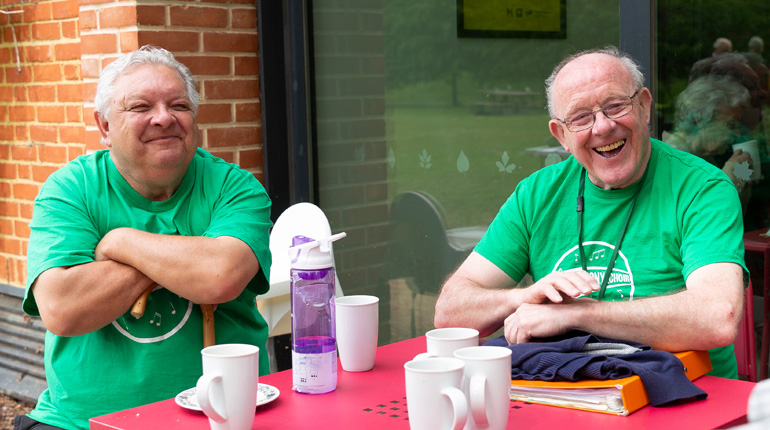
Changing times, same community spirit
We hope that you’ve enjoyed this brief look through time at how rural communities have come together in challenging circumstances. Whilst crises may change, the strength of the rural community has remained firm, and we believe that will always be the case.
We are very proud of our own community at The MERL, such as our monthly chatty café for caregivers (pictured) and our amazing online community.
Many thanks to all external contributors to this exhibition: Abigail Woods, David Hill, and the RABI.